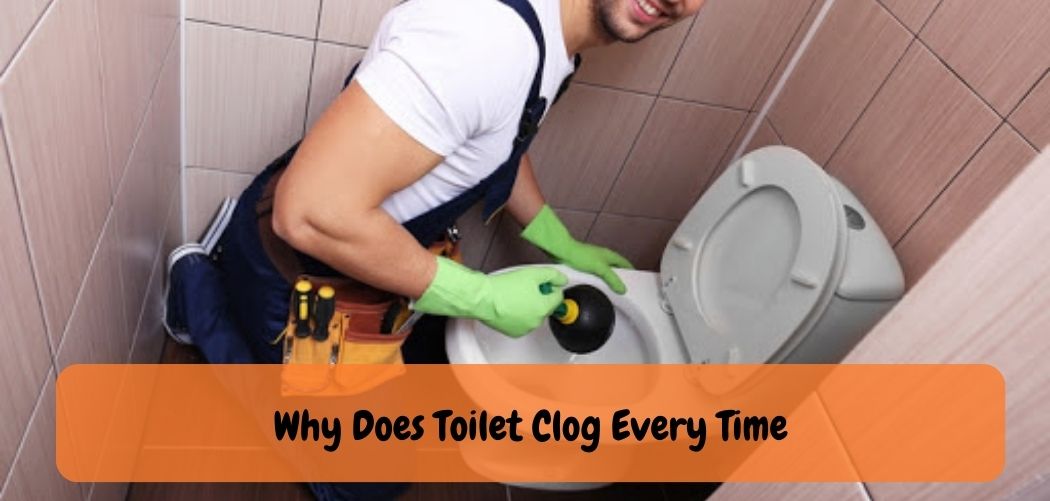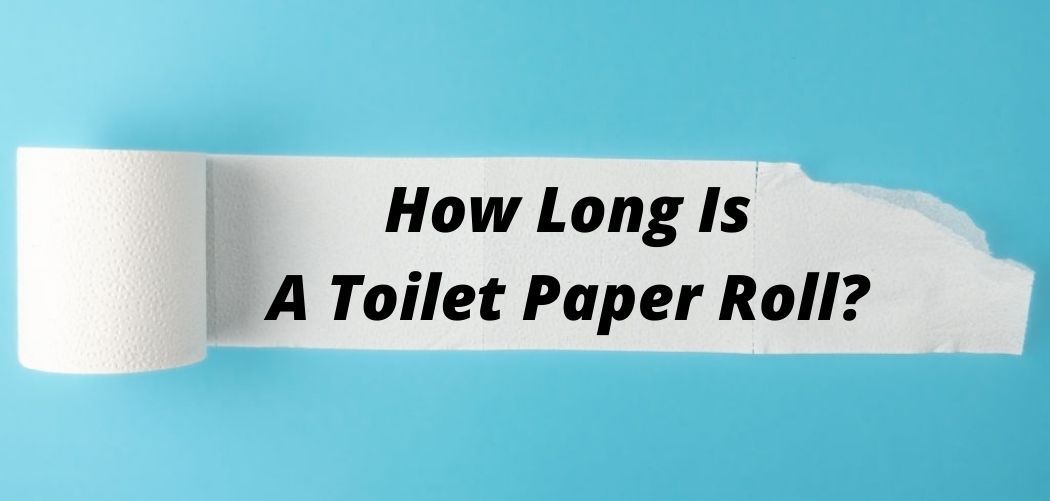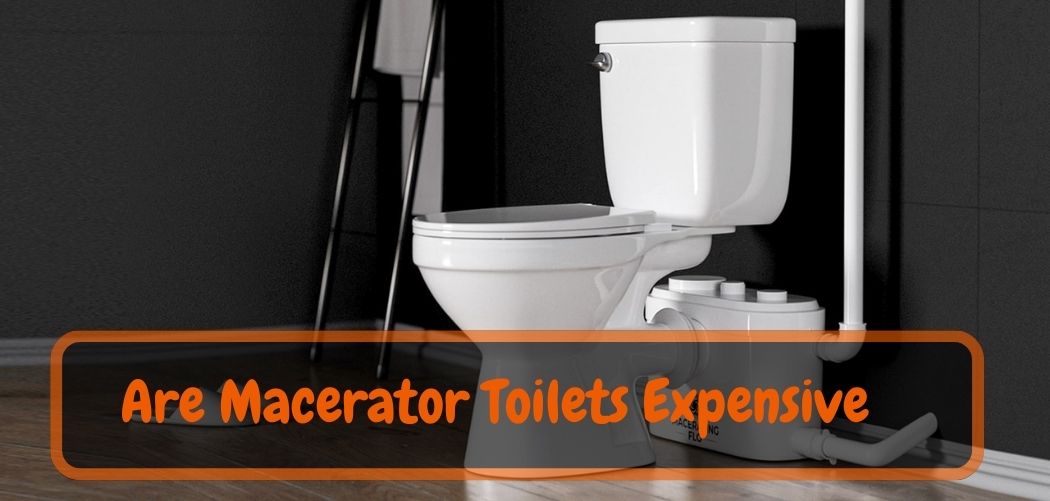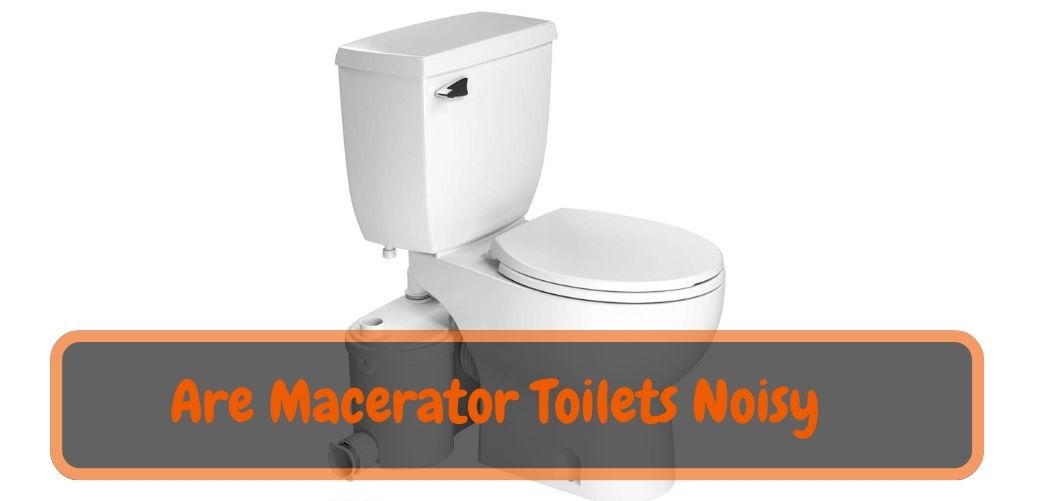Few household inconveniences are as frustrating and embarrassing as a toilet that clogs every time you use it. The mere thought of facing this problem can fill one with dread, especially when you’re a guest in someone else’s home. But fear not, for you’re not alone in grappling with this issue. The persistent question of “Why does my toilet clog every time?” has plagued homeowners and renters alike.
In this article, we’ll embark on a journey to uncover the root causes of this exasperating problem. By understanding the mechanics and factors contributing to frequent toilet clogs, you’ll not only gain valuable insights into the issue but also discover practical solutions to ensure a smoother and clog-free bathroom experience.
So, let’s delve into the world of toilets, plumbing, and flushing habits to unravel the mystery behind why your toilet seems to clog every time you use it.
Why Does Toilet Clog Every Time?
Toilets are designed to efficiently handle waste and flush it away without any issues. However, when you find your toilet clogging every time you use it, it can be exasperating. Let’s dive deeper into this issue to comprehend why it happens and what factors contribute to it.
- 1. Drainage System and Plumbing Layout: The plumbing in your home plays a critical role in how well your toilet flushes. Older or poorly designed drainage systems may not handle waste as effectively, leading to more frequent clogs.
- 2. Low-Quality Fixtures: The quality of your toilet and its components can impact its performance. Inexpensive or low-quality toilets may have narrower pipes or weaker flushing mechanisms, making them more susceptible to clogs.
- 3. Water Pressure: Adequate water pressure is essential for a toilet to flush effectively. Low water pressure can hinder the force needed to push waste down the drain, resulting in recurring clogs.
- 4. Flushing Habits: How you use your toilet matters. Excessive use of toilet paper, flushing non-flushable items, or flushing too quickly after use can overload the toilet’s capacity and lead to clogs.
- 5. Age of Plumbing Fixtures: Over time, pipes and fixtures can accumulate mineral deposits and debris, reducing their efficiency. This buildup can make toilets clog more frequently.
- 6. Foreign Objects: Occasionally, small objects or debris may inadvertently find their way into the toilet bowl, causing blockages. Understanding how these foreign objects can affect your toilet’s performance is crucial.
How do I stop my toilet from clogging all the time?
Now that we’ve explored some of the reasons behind your toilet clogging every time, it’s only natural to seek a more permanent solution to this frustrating issue. Here’s a closer look at how you can prevent toilet clogs from becoming a recurring problem:
- 1. Proper Maintenance: Regular maintenance can go a long way in preventing toilet clogs. Periodically inspect your toilet and plumbing for any visible issues, such as leaks, cracks, or loose connections. Addressing these problems early can prevent clogs from developing.
- 2. Upgrading Fixtures: Consider investing in higher-quality toilet fixtures. A toilet with a strong flush and a wider trapway is less likely to clog. Look for fixtures that are designed for efficient waste removal.
- 3. Adjusting Flushing Habits: Be mindful of what you flush down the toilet. Avoid flushing items like sanitary products, paper towels, and baby wipes, which can lead to clogs. Use an appropriate amount of toilet paper, and consider using thinner, more easily dissolvable toilet paper if clogs persist.
- 4. Professional Inspection: If your toilet continues to clog despite your efforts, it may be time to call a professional plumber. They can assess your plumbing system, identify any underlying issues, and recommend appropriate solutions.
- 5. Preventative Products: Some toilet clog prevention products, such as enzymes or treatments that break down waste and prevent buildup, can be used as a proactive measure to keep your toilet functioning smoothly.
By understanding the root causes of your toilet clogging every time and implementing these preventative measures, you can significantly reduce the frequency of clogs and enjoy a more trouble-free bathroom experience.
Also Read: What Causes Most Toilet Clogs?
Common Reasons for Frequent Toilet Clogs
Toilet clogs are not only a nuisance but can also be embarrassing and inconvenient, especially when they seem to occur consistently. In this section, we’ll explore some common scenarios and reasons for frequent toilet clogs and provide insights into why they happen and how you can address these issues.
Toilet Clogs Every Time I Poop
One of the most frustrating situations is experiencing toilet clogs right after using the restroom. This not only disrupts your daily routine but can also be embarrassing, especially if you’re a guest in someone else’s home. Here’s why this scenario happens and what you can do about it:
- 1. Excessive Waste: Sometimes, toilet clogs occur because the amount of waste being flushed exceeds the toilet’s capacity to handle it. This can happen if you use an excessive amount of toilet paper or if the waste itself is particularly large.
- 2. Inefficient Flushing Habits: Rushing to flush immediately after using the toilet can prevent proper waste removal. It’s essential to allow sufficient time for the toilet to break down and remove waste effectively.
- 3. Older Toilet Models: Older toilets may not have the same flushing power and efficiency as modern ones. If you have an outdated toilet, upgrading to a newer, more efficient model may help prevent clogs after every use.
- 4. Narrow Trapways: The trapway is the curved part of the toilet that carries waste from the bowl to the drain. Some toilets have narrower trapways, which can make them more prone to clogging, especially with larger waste.
- 5. Low Water Flow: Inefficient water flow during the flush can lead to incomplete waste removal, resulting in clogs. Low water pressure or water-saving toilets may be more susceptible to this issue.
- 6. Insufficient Water Level: The water level in the toilet bowl should be at the right height to aid in waste removal. If it’s too low, it may not effectively carry away waste.
Also Read: The Best Toilet to Prevent Clogging?
Why Does My Toilet Clog So Easily?
Toilets are designed to handle waste efficiently, but several factors can make them prone to clogs. Let’s delve into some of these factors:
- 1. Toilet Design: The design of your toilet matters. Some toilets are better equipped with features that aid in waste removal, such as larger trapways and powerful flush mechanisms. Older or lower-quality models may lack these features, making them more susceptible to clogs.
- 2. Water Pressure: Adequate water pressure is crucial for a toilet’s flush to work effectively. Low water pressure can hinder the force needed to push waste down the drain, leading to easy clogging.
- 3. Flushing Habits: Your flushing habits can contribute to easy clogging. If you frequently flush non-flushable items or use excessive amounts of toilet paper, you’re increasing the risk of clogs.
- 4. Mineral Buildup: Over time, minerals from hard water can accumulate in the toilet’s trapway and pipes, reducing their diameter and making them more prone to clogs.
Why Is My Toilet Clogged with Nothing in It?
Sometimes, you may encounter a situation where your toilet clogs seemingly without any reason or foreign objects in the bowl. Here’s what could be causing these seemingly random clogs:
- 1. Mineral Buildup: As mentioned earlier, mineral buildup from hard water can accumulate in the trapway and pipes. This buildup can restrict the flow of waste, leading to clogs even when there’s no visible foreign object.
- 2. Partial Clogs: Previous clogs that were not completely resolved can leave behind obstructions in the plumbing. These partial clogs can lead to future clogs, even when there’s nothing apparent in the toilet bowl.
- 3. Invisible Foreign Objects: Occasionally, small objects or debris may enter the toilet’s plumbing without your knowledge. These objects can move around and intermittently block the flow, leading to random clogs.
Understanding these common scenarios and reasons behind frequent toilet clogs is the first step toward effectively addressing the issue. In the next sections, we'll explore preventative measures and solutions to help you enjoy a clog-free bathroom experience.
Prevention and Maintenance
When it comes to toilet clogs, prevention is undoubtedly better than constantly dealing with the inconvenience of fixing them. In this section, we’ll explore proactive measures you can take to prevent toilet clogs from becoming a recurring problem. We’ll also discuss eco-friendly alternatives to chemical solutions for maintaining your toilet’s optimal performance.
What Can I Put in My Toilet to Keep It from Clogging?
Preventing toilet clogs starts with adopting good practices and using the right products. Here’s what you can do to keep your toilet clog-free:
- 1. Use Toilet Paper Wisely: Use an appropriate amount of toilet paper, and avoid excessive use. Consider switching to thinner, more easily dissolvable toilet paper to reduce the risk of clogs.
- 2. Avoid Flushing Non-Flushables: Never flush non-flushable items like baby wipes, paper towels, feminine hygiene products, or cotton swabs. These can easily lead to clogs and damage your plumbing.
- 3. Install a High-Efficiency Toilet: Consider upgrading to a high-efficiency toilet that uses less water but still provides a powerful flush. These toilets are designed to reduce clogs while conserving water.
- 4. Regularly Maintain Your Toilet: Periodic maintenance can help prevent clogs. Inspect your toilet and plumbing for any visible issues like leaks, cracks, or loose connections. Addressing these problems early can prevent clogs from developing.
- 5. Consider Preventative Products: Some preventative products, such as enzymes or treatments that break down waste and prevent mineral buildup, can be used to maintain your toilet’s performance without resorting to harsh chemicals.
- 6. Eco-Friendly Alternatives: Instead of using chemical drain cleaners, consider eco-friendly alternatives like baking soda and vinegar. These can help dissolve minor clogs without harming the environment or your plumbing.
How to Fix a Toilet That Keeps Clogging Up
Even with the best preventative measures, clogs can still happen. Knowing how to address them quickly can save you from a messy situation. Here’s a step-by-step guide to troubleshooting and DIY repairs:
- 1. Plunge the Toilet: A plunger is your first line of defense against a clog. Ensure there’s enough water in the bowl to cover the plunger, create a seal, and then apply firm, even pressure to dislodge the clog.
- 2. Use a Toilet Auger: If the plunger doesn’t work, a toilet auger can help reach and clear clogs deeper in the drain. Follow the manufacturer’s instructions for proper use.
- 3. Be Cautious with Chemical Drain Cleaners: While chemical drain cleaners can be effective, they should be used as a last resort. They can be harsh on your plumbing and the environment. Follow the instructions carefully and use them sparingly.
- 4. Seek Professional Help: If your toilet continues to clog despite your efforts, it may be time to call a professional plumber. They can assess your plumbing system, identify any underlying issues, and recommend appropriate solutions.
- 5. Consider a Hydro Jetting Service: In some cases, high-pressure hydro jetting may be necessary to clear stubborn clogs and remove mineral buildup in your plumbing. This is a service best performed by a professional plumber.
By following these preventive measures and knowing how to address clogs when they do occur, you can maintain a smoothly functioning toilet and minimize the inconvenience of frequent clogs. Remember that regular maintenance and responsible flushing habits are key to enjoying a clog-free bathroom experience.
Special Considerations
If you have an upstairs toilet, you may find that it frequently clogs due to unique challenges posed by gravity and plumbing considerations. In this section, we’ll explore why upstairs toilets are prone to clogs and provide solutions to address this issue.
Why Does My Upstairs Toilet Keep Clogging?
Upstairs toilets can be more susceptible to clogs compared to toilets on lower levels of your home. Here are some reasons behind this issue:
- 1. Gravity: Gravity plays a crucial role in the effectiveness of your toilet’s flush. Upstairs toilets rely on gravity to move waste through the drain and into the main sewer line. However, gravity has less force on higher levels, which can result in slower waste removal and more frequent clogs.
- 2. Longer Drainage Pipes: Upstairs toilets often have longer drainage pipes that extend down to the main sewer line. The longer the pipe, the more opportunities there are for clogs to occur, especially if the pipes have bends or angles.
- 3. Venting Issues: Proper venting is essential for efficient drainage. If there are venting issues in your plumbing system, it can cause airlocks and hinder waste removal, leading to clogs.
- 4. Water Pressure Variations: Water pressure variations can occur on different floors of a multi-story building. Insufficient water pressure can impede the toilet’s flushing power, making it more prone to clogs.
- 5. Older Plumbing: Older plumbing systems may have narrower pipes and outdated fixtures that are less effective at waste removal. Upgrading to newer, high-efficiency toilets and addressing any plumbing issues can help mitigate this problem.
Solutions:
To address frequent clogs in upstairs toilets, consider the following solutions:
- Install a Pressure-Assisted Toilet: Pressure-assisted toilets use compressed air to enhance the flush, making them more effective on upper floors where gravity is less powerful.
- Regular Maintenance: Ensure your plumbing system is well-maintained, including checking for leaks, venting issues, and proper water pressure.
- Use High-Efficiency Fixtures: Replace older toilets and fixtures with high-efficiency models designed for better waste removal.
- Professional Inspection: If clogs persist, consult a professional plumber to assess your plumbing system and recommend appropriate solutions.
How to Unblock a Badly Blocked Toilet
Sometimes, you may encounter a severely blocked toilet that standard methods won’t fix. In such cases, it’s essential to know how to address the issue effectively. Here are some tools and techniques you can use to unblock a badly clogged toilet:
- 1. Toilet Auger: A toilet auger, also known as a closet auger, is a specialized tool designed to reach and remove clogs deep within the toilet’s drain. Follow the manufacturer’s instructions for proper usage.
- 2. Plumber’s Snake: A plumber’s snake is a versatile tool that can be used to reach and clear blockages in both toilet and drain pipes. It’s especially useful for stubborn clogs.
- 3. Hydro Jetting: For severely blocked toilets and plumbing pipes, professional hydro jetting services may be necessary. Hydro jetting uses high-pressure water to break up and remove clogs and mineral buildup.
- 4. Seek Professional Help: If you’re unable to clear the blockage on your own or if the clog is recurrent, it’s best to consult a professional plumber. They have the expertise and equipment to diagnose and resolve complex clogging issues.
Remember to exercise caution when attempting to unblock a badly clogged toilet and, if necessary, seek professional assistance to avoid causing further damage to your plumbing system.
Quick Fixes and Clogged Toilet Remedies
Encountering a clogged toilet can be a stressful situation, especially when you need an immediate solution. In this section, we’ll provide you with some quick fixes and clogged toilet remedies that can provide emergency relief and get your toilet working again, allowing you to address the underlying issue later.
How to Unclog a Toilet Fast
If you’re facing a clogged toilet and need to resolve it quickly, follow these emergency fixes for immediate relief:
1. Use a Plunger:
- Step 1: Ensure there’s enough water in the toilet bowl to cover the plunger’s head.
- Step 2: Position the plunger over the drain hole and create a tight seal.
- Step 3: Apply firm, downward pressure, and then release. Repeat this motion several times.
- Step 4: If the clog is dislodged, water should start to drain. Flush the toilet to ensure the clog is completely gone.
2. Hot Water and Dish Soap:
- Step 1: Boil a pot of water and let it cool slightly.
- Step 2: Add a few drops of dish soap to the hot water.
- Step 3: Pour the soapy hot water into the toilet bowl from waist height.
- Step 4: Allow it to sit for a few minutes to help break down the clog.
- Step 5: Use a plunger to attempt to unclog the toilet as described above.
3. Baking Soda and Vinegar:
- Step 1: Pour about a cup of baking soda into the toilet bowl.
- Step 2: Add two cups of vinegar.
- Step 3: Let the mixture sit for several minutes.
- Step 4: Use a plunger to try to dislodge the clog.
- Step 5: If the clog is still present, add more vinegar and repeat the process.
Temporary Solutions to Get Your Toilet Working Again
While these quick fixes can provide temporary relief, it’s important to remember that they may not always completely resolve the underlying issue causing the clog. Once you’ve got the toilet working again, consider the following temporary solutions to prevent further problems until you can address the root cause:
- 1. Reduce Flushing: Avoid using the toilet until you’re confident the clog is fully cleared. Reducing flushing can prevent the water level from rising and potentially causing a messy overflow.
- 2. Use a Different Bathroom: If possible, use a different bathroom in your home until you’ve resolved the clog. This can minimize the risk of further complications.
- 3. Avoid Harsh Chemicals: While chemical drain cleaners can be effective, they should be used with caution and sparingly. Overuse of chemicals can harm your plumbing and the environment.
- 4. Keep a Plunger Handy: Plungers are valuable tools for addressing clogs quickly. It’s a good idea to keep one in each bathroom so that you’re prepared for any clogging emergencies.
Remember that these quick fixes and temporary solutions are meant to provide immediate relief and should not replace a proper investigation and resolution of the underlying issue causing the clogs. If you find that your toilet frequently clogs, it's essential to identify and address the root cause to prevent future problems.
Conclusion
In conclusion, dealing with a toilet that clogs every time can be a frustrating experience. However, with a better understanding of the causes and some preventive measures, you can minimize these inconveniences.
Regular maintenance and responsible flushing habits are key to ensuring a clog-free bathroom experience. Don’t let frequent toilet clogs disrupt your daily life; take action today to prevent and fix them effectively.










